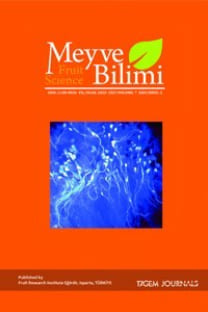Pestisit Sektöründe Araştırma ve Geliştirme
Tarımda yeşil devrim olarak adlandırılan yoğun girdi kullanımı üzerine inşa edilen sürecin bir parçası olan pestisitler, hem dünyada hem de ülkemizde modern tarımın vaz geçilmez bir parçası haline gelmiştir. Pestisit kullanımı olmadan dünyanın bugünkü nüfusunun bile doyurulabilmesi mümkün değilken, artan nüfus ve ekilebilir tarım alanlarının azalması nedeniyle pestisit kullanılmayan bir tarım sistemi gerçekçilikten oldukça uzaktır. Pestisitlerle ilgili yapılan araştırmalar ve bu sektöre tahsis edilen Ar-Ge fonları sürekli artmasına rağmen sektörde faaliyet gösteren firma sayısı ve pazara sunulan yeni ve çevreye duyarlı aktif madde sayısı sürekli azalmaktadır. Piyasaya sürülen aktif maddesayılarının düşmesi ve mevcut aktif maddelerin de yapılan yeni çalışmalar ışığında yasaklanması, bu aktif maddeleri kullanan çiftçileri ve tarım danışmanlarını zor durumda bırakmaktadır. Pestisit kullanımının yoğun olduğu sebzecilik, meyvecilik ve bağcılık sektörü bu değişimden en çok etkilenecek tarım sektörlerinin biri olacaktır. Bu çalışmada, pestisit sektöründe Ar-Ge faaliyetleri ile sektörün bu faaliyetler eksenindeki değişimi değerlendirilmiştir.Anahtar Kelimeler: Pestisit, araştırma-geliştirme (Ar-Ge)Research and Development in Pesticide SectorAbstractPesticides which is one of the part of the process built on the intensive input use, called green revolution in agriculture,have become an indispensable part of the modern agriculture both in our country and in the world. Feeding of the current population of the world is not possible without the use of pesticide, an agricultural system which is not used pesticide is far from realism due to the growing population and the reduction of arable area. Although research regarding pesticides and funds allocated to this sector Research and Development (R & D) increase continuously, the number of firms operating in the sector and introduced new environment-friendlyactive ingredients number has been decreasing steadily. Declining in the number of active substances placed on the market and prohibition of the existing active substances according to the recent studies are left in the lurch to farmers used these active ingredients and agricultural advisers. Fruit and vegetable growing and viticulture sectors used intensive pesticide will be one of the most affected agricultural sectors by this change. In this study, R & D activities in the pesticide industry and changing of the sector in the axis of these activities are evaluated.Key Words: Pesticide, research and development (R&D)
Anahtar Kelimeler:
Pestisit, araştırma-geliştirme (Ar-Ge)
-
Pesticides which is one of the part of the process built on the intensive input use, called green revolution in agriculture,have become an indispensable part of the modern agriculture both in our country and in the world. Feeding of the current population of the world is not possible without the use of pesticide, an agricultural system which is not used pesticide is far from realism due to the growing population and the reduction of arable area. Although research regarding pesticides and funds allocated to this sector Research and Development (R & D) increase continuously, the number of firms operating in the sector and introduced new environment-friendlyactive ingredients number has been decreasing steadily. Declining in the number of active substances placed on the market and prohibition of the existing active substances according to the recent studies are left in the lurch to farmers used these active ingredients and agricultural advisers. Fruit and vegetable growing and viticulture sectors used intensive pesticide will be one of the most affected agricultural sectors by this change. In this study, R & D activities in the pesticide industry and changing of the sector in the axis of these activities are evaluated
Keywords:
Pesticide, research and development (R&D),
___
- Anonim, 2008a. Zirai Mücadele Teknik Talimatı. Cilt V, s. 167-172, Ankara.
- Anonim, 2008b. Zirai Mücadele Teknik Talimatı. Cilt IV, s. 145-155, Ankara.
- Anonim, 2010. Türkiyede’ki Canavarotları ve Mücadelesi. Erişim tarihi: 05.06.2014. http://www.bmi.gov.tr/insaat-v1/upload/images/images/files/turkiyedecanavarotlari.pdf.
- Anonim, 2012a. Global Agrochemical Industry 2012-2017: Trend, Profit, and Forecast Analysis. Erişim tarihi: 05.06.2014. http://www.reportlinker.com/p01023598-summary/Global-Agrochemicals-Industry-Trend-Profit-and-Forecast-Analysis.html.
- Anonim, 2012b. Bitki Koruma Ürünleri. Erişim tarihi: 05.06.2014. http://www.tarim.gov.tr/Sayfalar/Icerikler.aspx?EtiketId=c28f80d0-9d9e-48b1-9b99-9a879364e11f&IcerikId=5c79fa1a-54da-4f7b-828f-ddfe0923d93b.
- Anonim, 2014a. İnsan Hakları Evrensel Beyannamesi. http://www.ohchr.org /EN/UDHR/Pages/ Language.aspx?LangID=trk.
- Anonim, 2014c. Our Industry 2013. Erişim tarihi: 05.06.2014. http://www.syngenta.com/global/corporate/SiteCollectionDocuments/pdf/publications/our-industry-2013-syngenta.pdf.
- Anonim, 2014d. Markets. Erişim tarihi: 10.11.2014. http://news.agropages.com/News/NewsDetail---12105.htm.
- Briggs H, 2013. Irish Potato Famine Pathogen Identified. Erişim tarihi: 05.06.2014. http://www.bbc.com/news/science-environment-22596561.
- Blumer B, 2013. We’ve Covered the World in Pesticides. Is That a Problem? Erişim tarihi: 05.06.2014 http://www.washingtonpost.com/blogs/wonkblog/wp/2013/08/18/the-world-uses-billions-of-pounds-of-pesticides-each-year-is-that-a-problem.
- Burçak AA, 2014. İlaç, Alet ve Toksikoloji Araştırmaları Çalışma Grubu. Erişim tarihi: 11.11.2014. http://www.tarim.gov.tr/TAGEM/Belgeler/SUNULAR /%C4%B0la%C3%A7%2c%20Alet%20ve%20Toksikoloji%20Ara%C5%9Ft%C4%B1rma%20%C3%87al%C4%B1%C5%9Fmalar%C4%B1_Dr.%20A.Alev%20Bur%C3%A7ak.pdf.
- Anonim, 2014b. Pesticide Industry: Market Research Reports, Statistics and Analysis. http://www.reportlinker.com/ci02012/Pesticide.html.
- Chakravarty S, 2014. World Agrochemical and Pesticide Market to Grow 8.7% annually from 2014 to 2018. Erişim tarihi: 05.06.2014. http://www.marketresearchreports.com/blog/2014/01/06/world-agrochemical-and pesticide-market-grow- 87-annually-2014-2018#sthash.Ah9mn8eN.dpuf.
- McDougall P, 2012. R&D Trends in Crop Protection. Erişim tarihi: 05.06.2014. http://www.ecpa.eu/files/attachments/R&D%20Trends.pdf.
- McDougall P, 2013. R&D Trends for Chemical Crop Protection Products and the Position of the European Market A Consultancy. Erişim tarihi: 05.06.2014. http://www.ecpa.eu/files/attachments/R_and_D_study_2013_v1.8_webVersion_Final pdf.
- Pimentel D, Krummel J, Gallahan D, Hough J, Merrill A, Schreiner I, Vittum P, Koziol F, Back E, Yen D, Fiance S, 1978. Benefits and Costs of Pesticide Use in United States Food Production. BioScience 28: 772, 778-784.
- Pimentel D, McLaughlin L, Zepp A, Lakitan B, Kraus T, Kleinman P, Vancini F, Roach WJ, Grapp E, Keeton WS, Selig G, 1993. Environmental and Economic Effects of Reducing Pesticide Use in Agriculture. Agriculture, Ecosystems and Environment. Agriculture, Ecosystems and Environment 46: 273-288.
- Rojas L, 2014. International Pesticide Market and Regulatory Profile. Erişim tarihi: 05.06.2014. http://wcropchemicals.com/pesticide_regulatory_profile/#_ftn1.
- SCOPUS, 2014.Databases. Erişim tarihi: 05.06.2014. http://www.scopus.com/
- Simarmata M, Kaufmann J E, Penner D, 2003. Potential Basis of Glyphosate Resistance in California Rigid Ryegrass (Lolium rigidum). Weed Science 51:678–682.
- Sparks TC, 2013. Insecticide Discovery: An Evaluation and Analysis. Pesticide Biochemistry and Physiology 107: 8–17.
- TUİK, 2014. Türkiye İstatistik Kurumu. Erişim tarihi: 05.06.2014. http://www.tuik.gov.tr.
- ISSN: 2148-0036
- Başlangıç: 2013
- Yayıncı: Meyvecilik Araştırma Enstitüsü Müdürlüğü
Sayıdaki Diğer Makaleler
Pestisit Sektöründe Araştırma ve Geliştirme
Moleküler Markörlerin Meyve Islahında Kullanım Alanları
Saim BOSTAN, Yeliz KAŞKO ARICI
Kiraz Yetiştiriciliğinde Organik ve Konvansiyonel Üretimin Karşılaştırmalı Ekonomik Analizi
Salih ATAY, Mehmet DEMİRTAŞ, Ahmet ASLAN
Salihli (Manisa) Yöresindeki Şeftali (Prunus persica L.) Bahçelerinin Beslenme ve Kirlilik Durumları
